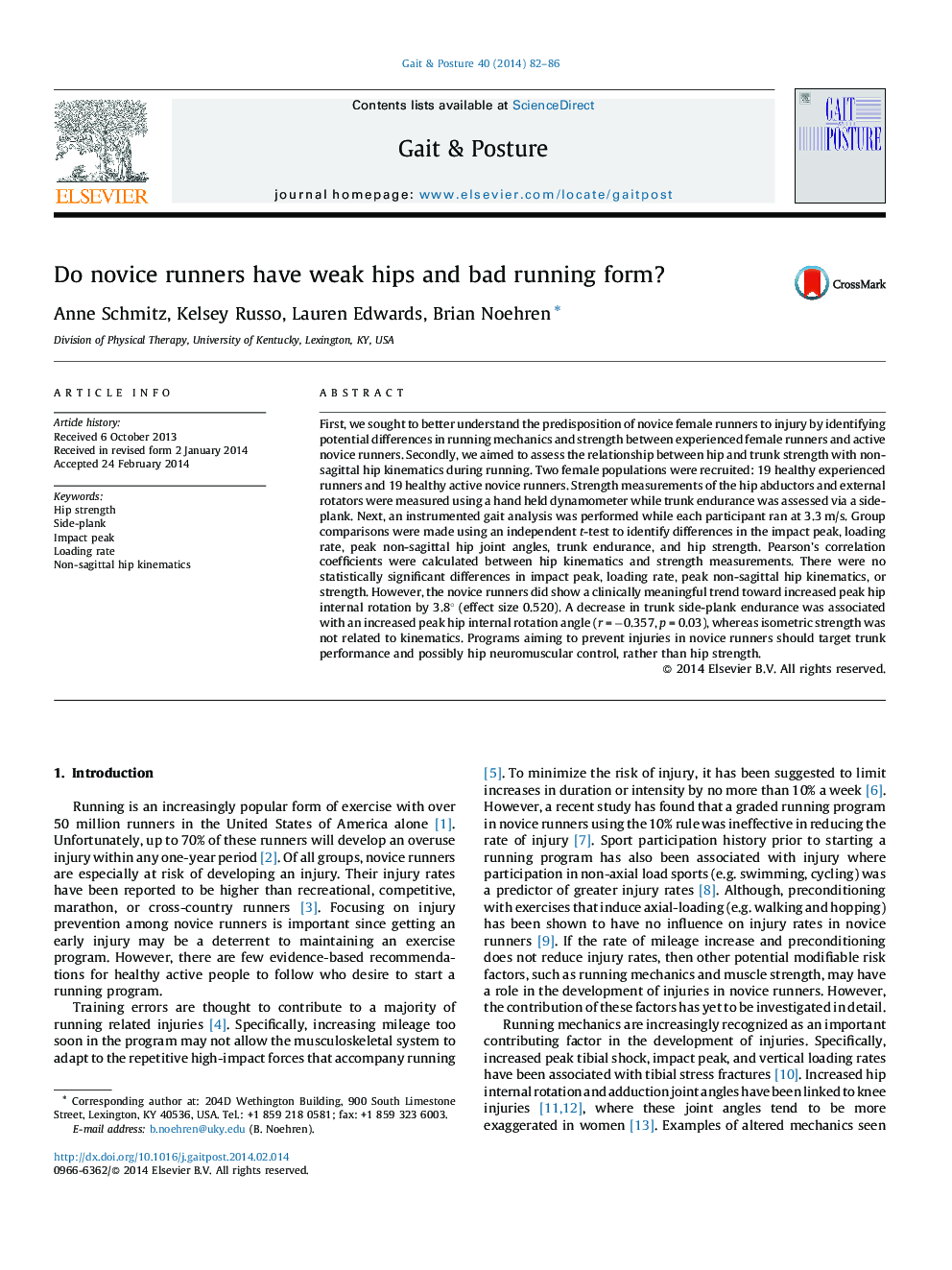| کد مقاله | کد نشریه | سال انتشار | مقاله انگلیسی | نسخه تمام متن |
|---|---|---|---|---|
| 6206449 | 1265647 | 2014 | 5 صفحه PDF | دانلود رایگان |
- Novice runners do not have different running form than experienced runners.
- Novice runners do not have weaker hip muscles or decreased trunk endurance.
- Novice runners should target trunk performance and possibly hip control.
First, we sought to better understand the predisposition of novice female runners to injury by identifying potential differences in running mechanics and strength between experienced female runners and active novice runners. Secondly, we aimed to assess the relationship between hip and trunk strength with non-sagittal hip kinematics during running. Two female populations were recruited: 19 healthy experienced runners and 19 healthy active novice runners. Strength measurements of the hip abductors and external rotators were measured using a hand held dynamometer while trunk endurance was assessed via a side-plank. Next, an instrumented gait analysis was performed while each participant ran at 3.3 m/s. Group comparisons were made using an independent t-test to identify differences in the impact peak, loading rate, peak non-sagittal hip joint angles, trunk endurance, and hip strength. Pearson's correlation coefficients were calculated between hip kinematics and strength measurements. There were no statistically significant differences in impact peak, loading rate, peak non-sagittal hip kinematics, or strength. However, the novice runners did show a clinically meaningful trend toward increased peak hip internal rotation by 3.8° (effect size 0.520). A decrease in trunk side-plank endurance was associated with an increased peak hip internal rotation angle (r = â0.357, p = 0.03), whereas isometric strength was not related to kinematics. Programs aiming to prevent injuries in novice runners should target trunk performance and possibly hip neuromuscular control, rather than hip strength.
Journal: Gait & Posture - Volume 40, Issue 1, May 2014, Pages 82-86
